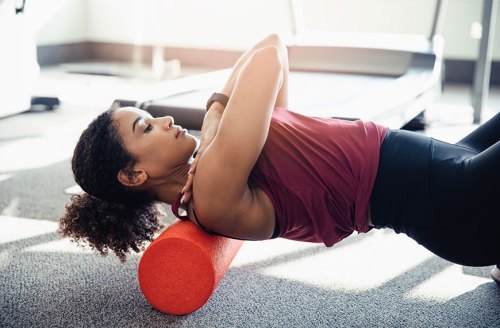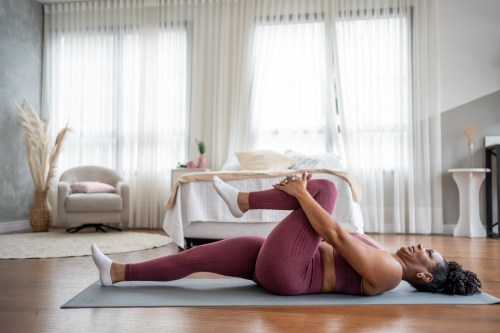7 of the most common foam rolling mistakes experts see people make
Serious question: Are you foam rolling correctly? These are the top foam rolling mistakes experts make, for your learning pleasure.

Every human being should own a foam roller for recovery after a workout. Just be careful: As wonderful as they are, if you’re not using your foam roller correctly, you could be doing more harm than good.
Take some time to go through some of the most common mistakes people make, according to trainers, physical therapists, orthopedic surgeons, and more. You’ll get all the relief you need without accidentally causing yourself more pain or discomfort.
The most common foam rolling mistakes, according to experts
1. It hurts… a lot
Contrary to popular belief, foam rolling shouldn’t be super painful. If you have any muscles that are strained, inflamed, or irritated—not just sore!—experts say it’s best to hold off. “You shouldn’t foam roll a specific area if you can’t breathe through your rolling. More isn’t better,” says Corinne Croce, DPT, cofounder of NYC’s Body Evolved. “If you’re unsure what’s normal, a professional assessment with personal recommendations will always be beneficial.”
2. You’re not rolling slow enough
Foam rolling isn’t something that you should fly through. Dillon Spicer, CPT and Rumble Boxing trainer, says it’s important to go slowly and make sure you’re taking your time as you’re rolling, as it can be intense on your tight muscles as you’re relieving all that pent-up tension.
3. You’re rolling your Iliotibial band if it’s sore
Not only is rolling a sore IT band super painful—it’s also totally unnecessary and can result in even more problems. “Some research states the added compression of rolling may actually exacerbate your symptoms,” says physical therapist Michael Conlon, owner of Finish Line PT in New York City.
4. You’re starting with a firm roller
You might want to reach for an extra firm foam roller, but until you get used to it, it’s a good idea to begin with something that’s less intense. “When you’re first starting out, use a foam roller on the softer side,” says Steven Struhl, MD, orthopedic surgeon and sports medicine expert. “As you become more comfortable and get used to different techniques, you can begin using a denser roll.”
5. You’re rolling out your lower back
There are many ways you can help relieve lower back pain, but foam rolling isn’t one of them. Aside from being painful, it can cause joint issues, which in turn leads to even more back pain.
“When you think of typical foam rolling, like rolling out the calves or quads, you move up and down over that tight muscle. You don’t want to do that same type of rolling out with the spine. The vertebrae’s spinous prominences are bony and it can’t be really uncomfortable and irritating to roll up and down like that,” says Danielle Weis, PT, physical therapist at Spring Forward Physical Therapy. “For someone with absolutely no spine issues, it could simply feel uncomfortable the first few time. Over time, though, what it does is repeatedly jam the vertebral facet joints up against each other, and this can cause irritation of the joints that eventually leads to back pain.”
6. You’re not doing it consistently
If you’re only foam rolling every now and then, start doing so daily. That’s when you’ll really notice the full-body benefits kick in. “Foam rolling may be used any time when feeling restricted or for the general health of soft tissues,” Croce says. “If performed correctly—one to two minutes max per area, with movement vs. steady pressure and with rhythmic breathing—foam rolling may be used daily.”
7. You’re only using it to roll
While rolling is great, it’s not the only way to use a foam roller. If you’re not also lying on top of it—lining it up underneath your spine from your head to your tailbone—you’re missing out. “One of the best things you can do is lie down on a foam roller,” says Rebecca Lubart, Pilates pro and founder of Dynamic Body Pilates. “Even a brief, five-minute session of lying down on a foam roller can leave you feeling relieved and refreshed.”
Make yoga feel like a massage with these moves:
Full-body gua sha might be even better at melting tight muscles than a foam roller. And if you’ve been foam rolling, here’s why you should try “rocking.”
Sign Up for Our Daily Newsletter
Get all the latest in wellness, trends, food, fitness, beauty, and more delivered right to your inbox.
Got it, you've been added to our email list.










